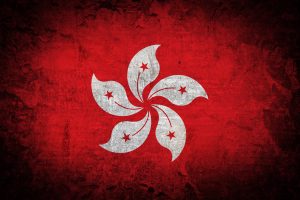It’s been five years since Hong Kong has held 5.1 marches on International Labor Day. Since the implementation of the draconian Hong Kong National Security Law (NSL), which the government has weaponized to crack down on the city’s independent trade union movement, numerous trade unionists have been arrested, incarcerated, or placed on bounty, and hundreds of trade unions have been dissolved, stopped operations, or withdrawn.
Under the government’s strict control, not only are marches to voice workers’ concerns prohibited, but opposition to the government’s labor policies has become rare. Inevitably, workers’ rights in the city have been undermined.
Last month, the Hong Kong Labor Rights Monitor issued “The State of Labor in Hong Kong 2023,” which examined the city’s recent developments in the labor market, labor standards violations, trade union activities, and workers’ collective actions. According to the report, at least 13 trade union leaders had been arrested by the end of 2023. Three of them are still incarcerated, six have been released upon completing their sentences, three were out on bail following their arrests, and one saw the charges withdrawn. In addition, a trade unionist overseas is wanted for engaging in international labor movements.
Faced with a deteriorating political climate and the chilling impact of the NSL, a staggering 218 unions were forced to dissolve or deregister between 2021 and 2023. This starkly contrasts with the mere 11 unions that saw similar fates between 2018 and 2020.
During the same period, there has been a notable decline in the number of union members. This figure fell 7.6 percent, from 934,000 to 863,000. The size of trade unions shrank, reflected in the average number of trade union members falling from 1,019 to 597 in the same period. And there has been a noteworthy rise in “mini unions” with 50 or fewer members. The number of such unions has surged dramatically from 287 to 813 during the same period, a threefold increase.
The report also predicted that the formal dissolution of the Hong Kong Professional Teachers’ Union would lead to a further one-sixth reduction in trade union membership, plummeting to 770,000.
The dissolution of large independent unions, coupled with the shrinking size and fragmentation of existing unions and a fall in membership, posed formidable obstacles for organizers seeking to fight for their rights. Inevitably, it excluded and marginalized workers who already lacked power within labor relations.
Since the implementation of the NSL, businesses have targeted a small number of labor unions with collective bargaining status. For example, the employer abruptly informed the Cathay Pacific Airways Flight Attendants Union that year-end compensation negotiations had been cancelled, and the union office in the company’s building had been forcibly taken over. The Bar Bending Industry Workers Solidarity Union’s yearly collective bargaining sessions were called off without notice. These unions had previously been affiliated with the Hong Kong Confederation of Trade Unions (HKCTU), and the incidents happened after the forced dissolution of HKCTU.
With the dissolution of independent trade unions, Beijing-controlled “puppet unions” have openly put their political loyalty over workers’ interests, resulting in a more straightforward implementation of anti-labor measures than ever before.
For example, between 2019 and 2022, the government has frozen the Statutory Minimum Wage (SMW) for four years in a row, aggravating the hardship of working poor people. The new review mechanism’s formula for the yearly SMW rate adjustment is expected to raise the existing SMW of 40 Hong Kong dollars to 41.8, a symbolic increase that does little to improve the situation for the grassroots. Notably, the Minimum Wage Commission, which is entirely controlled by the government, and pro-establishment unions supported the new review mechanism.
Furthermore, the government bypassed the existing tripartite negotiation mechanism (between the government, employees, and employers) and unilaterally increased the import of foreign workers, centralizing approval authority under administrative officials. As the Hong Kong economy worsens, the expanded scheme of importing foreign workers has recently provoked discontent among the local unemployed workers. Hundreds of construction workers have even spontaneously initiated a signature campaign, accusing the pro-government union of failing to respond to workers’ demands, deepening the conflict between the workers and the unions.
Workers are deprived of ways to express their concerns due to the government’s continued repression of independent trade unions, making it extremely difficult to influence government policies through normal channels. Given Hong Kong’s gloomy medium-term economic outlook, labor relations are expected to deteriorate further, potentially leading to more spontaneous worker resistance actions.

































